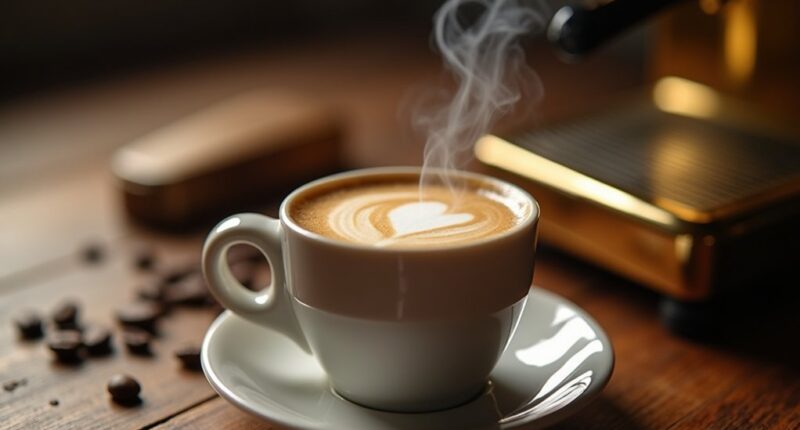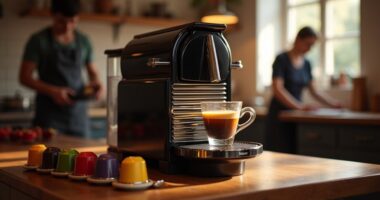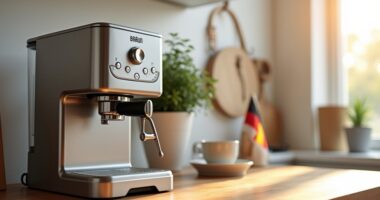Good espresso is all about that perfect harmony, you know? You want a rich, creamy body courtesy of a thick hazelnut crema, plus a balance of sweetness and bitterness that’ll make your taste buds party! The aroma should hit you like a cozy hug with nutty and floral notes. Don’t forget the aftertaste—it’s gotta linger and surprise you in all the best ways. Stick around, and I’ll spill the beans on how to brew that cup of joy!
At a Glance
- A good espresso features a thick, compact crema with a hazelnut color, indicating proper extraction quality.
- Aroma complexity, with layers of nutty, caramel, and floral notes, enhances the overall espresso experience.
- Flavor balance between bitterness, acidity, sweetness, and a rich, creamy body is essential for a satisfying taste.
- The aftertaste should evolve pleasantly, with a lingering sweetness that balances bitterness for 10-15 seconds.
- Precision in brewing parameters, including temperature, grind size, and pressure, is crucial for achieving optimal espresso quality.
Visual Characteristics of Espresso
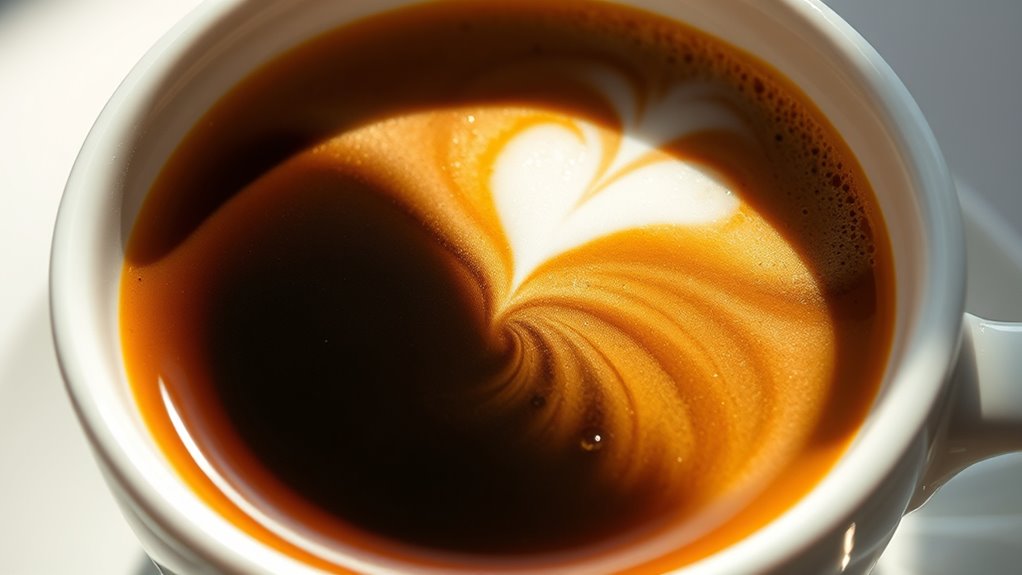
Espresso is like a little cup of magic, isn’t it? Just look at that beautiful crema formation! It’s like a hazelnut crown, with varying shades from dark brown to vibrant orange.
You know, the color gradation tells a story about the extraction. If it’s too blonde, things might be going south. A good espresso has a thick, compact crema that sticks around, stretching back when you take a sip.
It’s all about the balance, really. And let’s not forget, the right roast and machine can make all the difference. A perfect shot is a feast for the eyes! Additionally, the automatic espresso machine you choose plays a vital role in achieving that ideal extraction.
Aroma Profile and Its Importance
While that stunning crema on your espresso is definitely eye-catching, the real magic happens when you take a whiff. The aroma complexity is like a warm hug for your senses—inviting you to explore layers of nutty, caramel, and even floral notes.
When you inhale, you’re not just smelling coffee; you’re diving into a sensory perception experience that tells a story about the beans’ journey. It’s fascinating how roast levels and brewing methods can crank up or tone down these delightful scents. The optimal brewing temperature, typically between 90-96 degrees Celsius, plays a crucial role in extracting these aromatic compounds effectively.
Flavor Balance and Body Texture
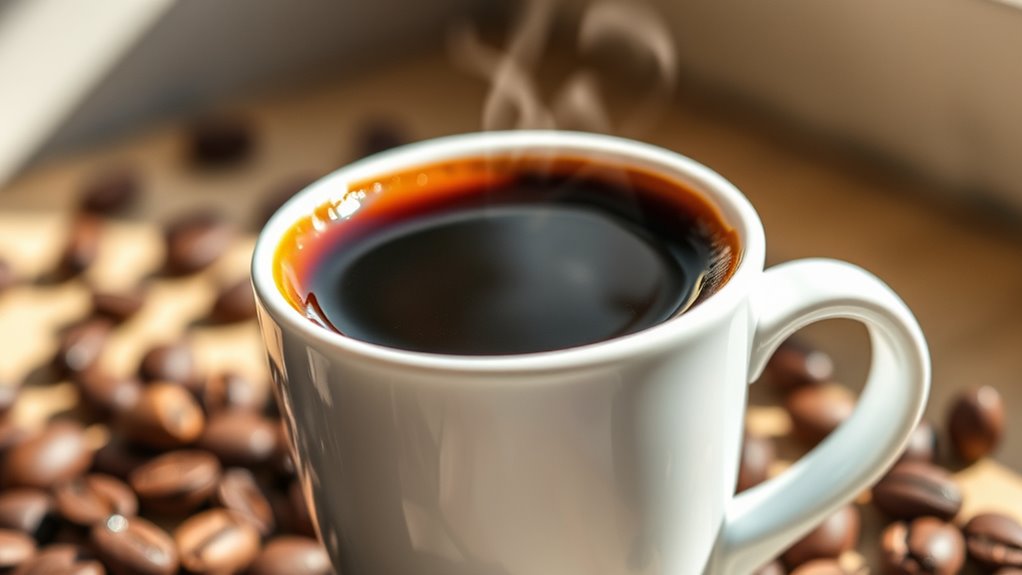
When you take a sip of your favorite espresso, it’s not just about the taste; it’s a whole experience!
You’re diving into a world where flavor intensity meets mouthfeel experience. The balance of bitterness, acidity, sweetness, and a hint of saltiness creates a delicious harmony.
You want that rich, creamy body that feels like a warm hug for your taste buds, right? A well-crafted espresso should glide smoothly without any weird astringency, leaving you wanting more. The quality of your espresso is heavily influenced by the espresso machine type, which can greatly affect the extraction process and ultimately the flavor profile of your brew.
Aftertaste and Finish Quality
Have you ever sipped an espresso and thought, “Wow, what’s that lingering flavor?”
The aftertaste is like the encore of your favorite band—it’s what sticks with you after the main event!
A great aftertaste should be sweet, balanced, and clean, leaving your palate craving more.
Here’s what to look for:
- Aftertaste evolution: Flavors should change and surprise you.
- Sweetness balance: A delightful sweetness that complements the bitterness.
- Lingering quality: It should hang around for about 10-15 seconds, making each sip memorable. Additionally, the choice of bean origin can greatly influence the sweetness and complexity of the aftertaste.
Technical Parameters for Brewing Excellence
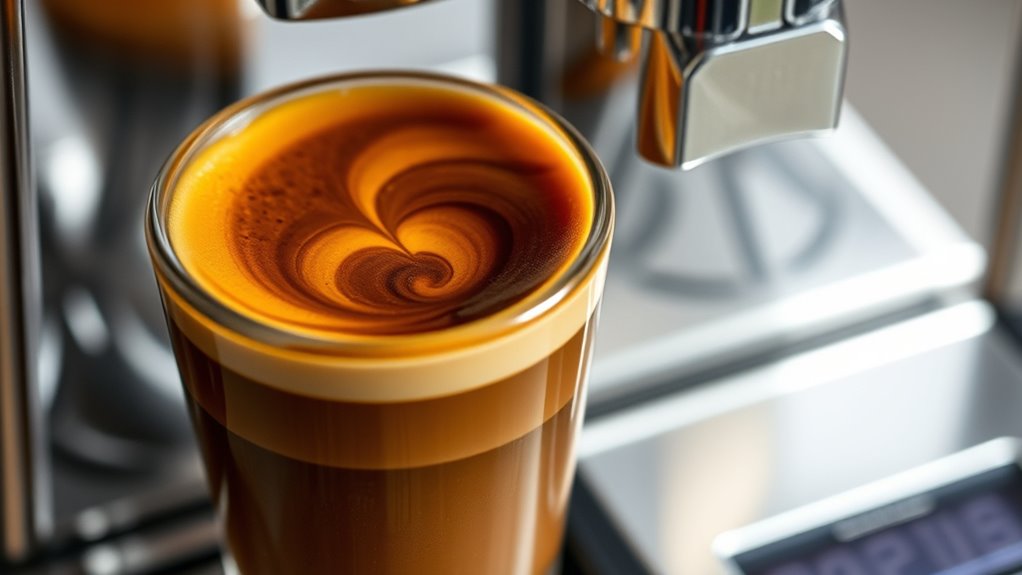
If you want to brew a fantastic espresso, you’ve got to get the technical stuff just right!
Start with your brew temperature—aim for 90 to 93°C.
Aim for a brew temperature of 90 to 93°C for the perfect espresso!
Next, nail that grind size; it should be fine, almost powdery!
Keep an eye on pressure consistency, ideally around 9 bars, to pull out those delicious flavors.
Don’t forget dose accuracy—6 to 9 grams for a single shot is spot on.
And watch your extraction time; 18 to 25 seconds is your sweet spot.
With machine stability, you’ll create a cup that’ll make your friends beg for more.
Remember, using the right coffee grinder type can significantly impact the quality of your espresso.
Trust me, you’ll be the espresso hero!
